- World Population Review Newsletter
- Posts
- The World’s Smartest New Export: College Degrees
The World’s Smartest New Export: College Degrees
How nations are turning higher education into global leverage.
Greetings, curious strategist of human potential,
Education is no longer just a rite of passage—it’s a global currency. Nations now trade in brains and degrees, turning classrooms into tools of influence and immigration.
Who's exporting knowledge for power? Who’s importing it for growth?
This edition dives into the world’s smartest soft power play—and how it affects your family, your future, and the next frontier of opportunity.
Let’s dive in.
7 Actionable Ways to Achieve a Comfortable Retirement
Your dream retirement isn’t going to fund itself—that’s what your portfolio is for.
When generating income for a comfortable retirement, there are countless options to weigh. Muni bonds, dividends, REITs, Master Limited Partnerships—each comes with risk and oppor-tunity.
The Definitive Guide to Retirement Income from Fisher investments shows you ways you can position your portfolio to help you maintain or improve your lifestyle in retirement.
It also highlights common mistakes, such as tax mistakes, that can make a substantial differ-ence as you plan your well-deserved future.
In today’s global knowledge economy, education isn’t just a public good—it’s a billion-dollar export. Countries with elite universities are reaping the rewards, turning student visas into long-term economic boons.
🎓 The United States leads the pack, with over 1 million international students contributing more than $40 billion annually to its economy. The top draw? World-class research universities, abundant funding, and a cultural cachet still hard to match.
🇬🇧 The United Kingdom, despite Brexit, remains an education magnet. Universities like Oxford, Cambridge, and Imperial College attract students from over 150 nations, many of whom stay and contribute to the local workforce.
🇦🇺 Australia has turned education into its third-largest export, with over 600,000 international students each year—thanks to sunny climates, generous post-study work visas, and institutions punching above their weight.
🔍 Surprising stat: In Australia, every 1 in 6 university students is international—a higher proportion than any other country in the OECD.
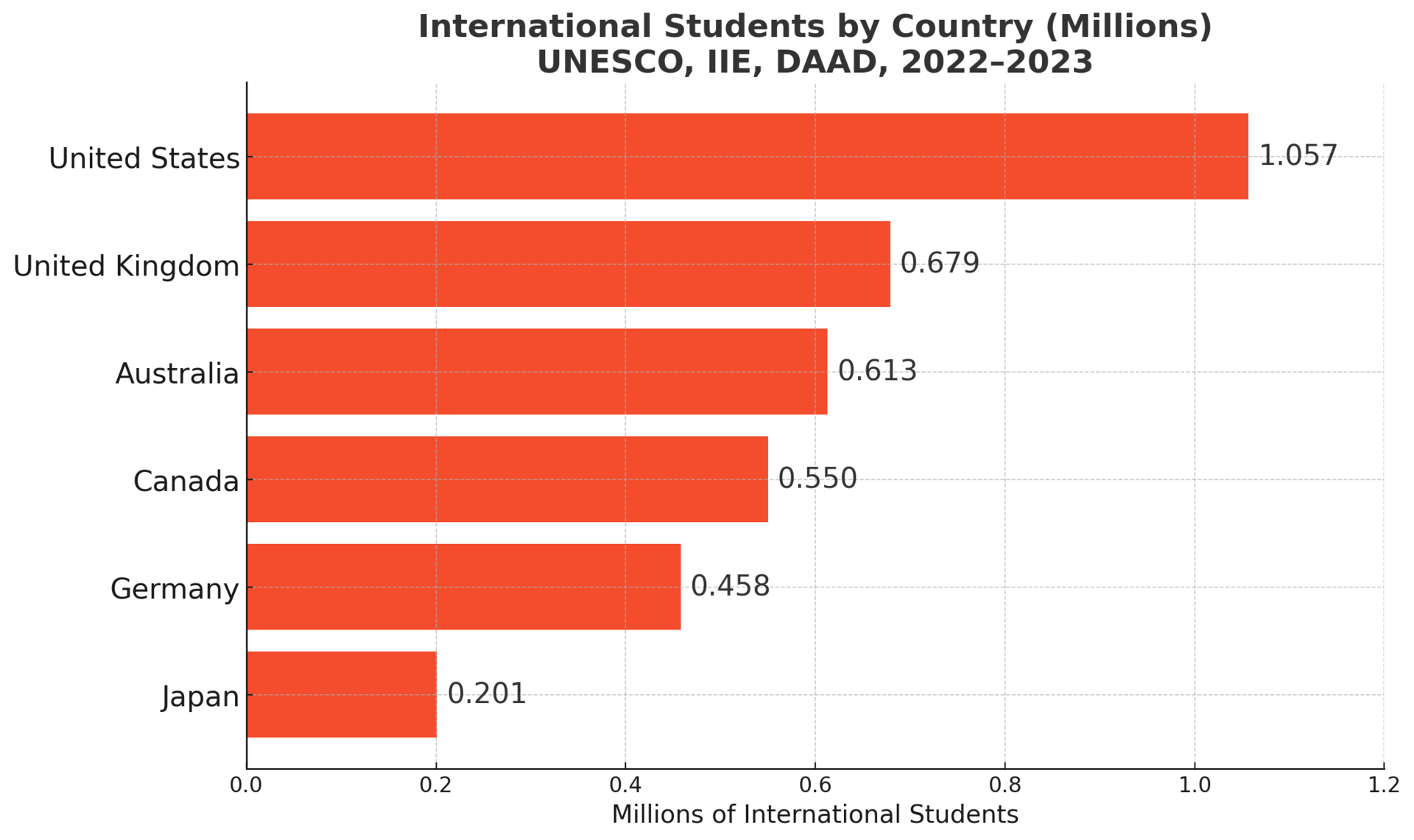
Not all countries can export degrees—but they can import human capital. Some have embraced foreign students as part of broader population or innovation strategies.
🇨🇦 Canada has doubled its international student intake in the last decade—and not by accident. A welcoming immigration policy allows graduates to transition easily into permanent residency, addressing both labor shortages and demographic decline.
🇩🇪 Germany offers tuition-free education, even to foreign students—an unusual model that draws talent from across Europe, Africa, and South Asia. It’s a quiet strategy to build goodwill and fill future workforce gaps.
🇸🇬 Singapore blends elite education with strategic intent: it attracts top scholars, trains them at institutions like NUS, then steers them into national industries.
💡 Fascinating insight: In Germany, nearly 30% of international students plan to stay post-graduation—a silent but powerful form of soft power.

Beyond the usual suspects, a second tier of countries is emerging as education hubs—offering affordable, English-taught degrees, lower living costs, and simpler visa processes.
🇵🇱 Poland is rising fast in international student rankings, with over 100,000 foreign students, many drawn by EU-recognized degrees at a fraction of Western tuition costs.
🇲🇾 Malaysia is positioning itself as a Southeast Asian education hub, with campuses from UK and Australian universities offering dual degrees in Kuala Lumpur.
🇹🇷 Turkey now hosts students from Central Asia, the Middle East, and Africa, thanks to state-funded scholarships and an expanding university system.
🔎 Unexpected fact: Poland saw a 900% increase in foreign students between 2005 and 2020—many staying to work within the EU.
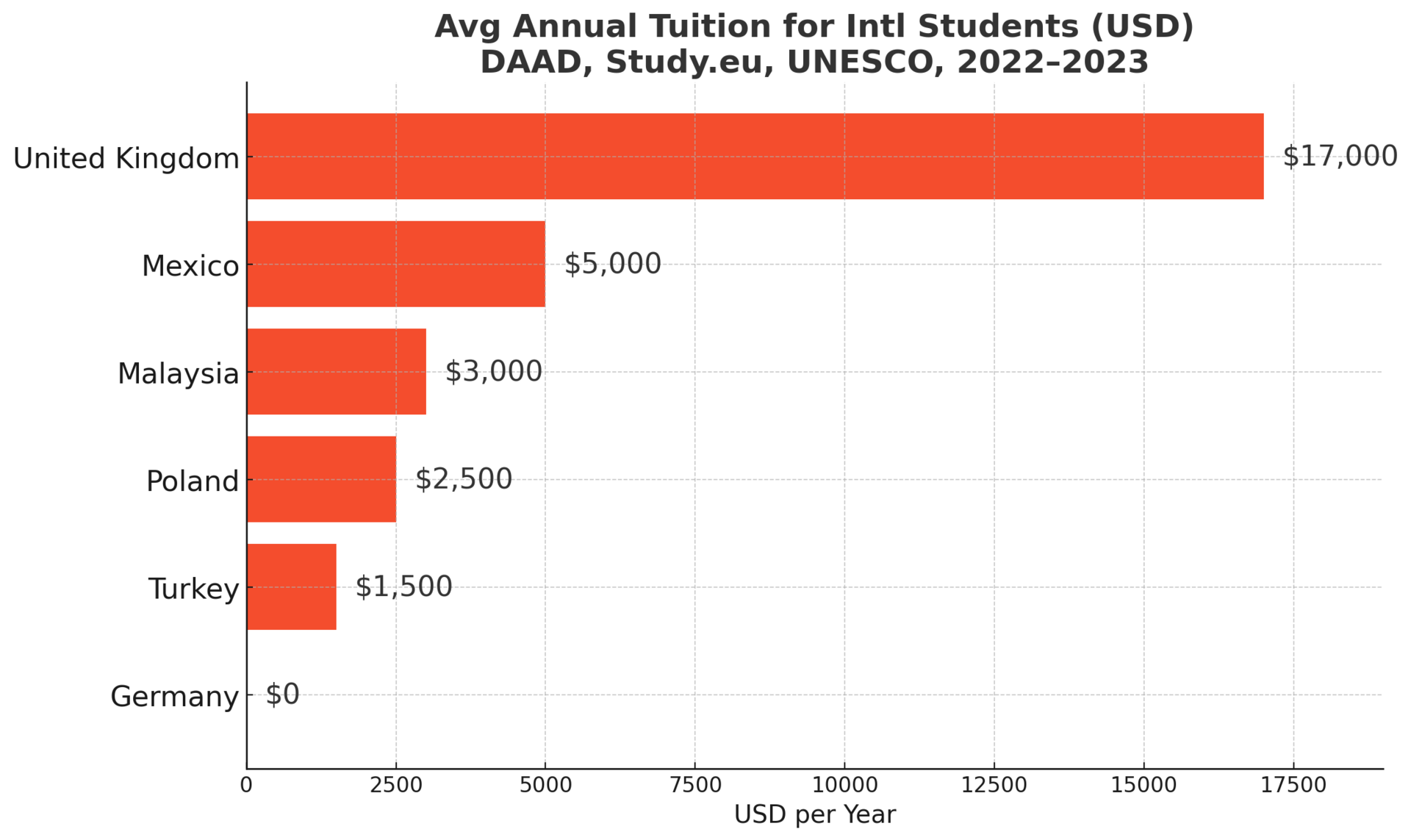
But what can you actually DO about the proclaimed ‘AI bubble’? Billionaires know an alternative…
Sure, if you held your stocks since the dotcom bubble, you would’ve been up—eventually. But three years after the dot-com bust the S&P 500 was still far down from its peak. So, how else can you invest when almost every market is tied to stocks?
Lo and behold, billionaires have an alternative way to diversify: allocate to a physical asset class that outpaced the S&P by 15% from 1995 to 2025, with almost no correlation to equities. It’s part of a massive global market, long leveraged by the ultra-wealthy (Bezos, Gates, Rockefellers etc).
Contemporary and post-war art.
Masterworks lets you invest in multimillion-dollar artworks featuring legends like Banksy, Basquiat, and Picasso—without needing millions. Over 70,000 members have together invested more than $1.2 billion across over 500 artworks. So far, 23 sales have delivered net annualized returns like 17.6%, 17.8%, and 21.5%.*
Want access?
Investing involves risk. Past performance not indicative of future returns. Reg A disclosures at masterworks.com/cd
The most explosive education market might not be geographic—it’s digital. Remote learning has exploded from a pandemic necessity into a structural shift in how knowledge is delivered.
📱 Online-only universities like the University of the People (U.S.) and Open University (UK) now enroll students in over 200 countries—offering flexible, affordable options with global accreditation.
💼 Corporate universities from Google, Meta, and Amazon now rival traditional education in technical fields—offering micro-degrees and credentials recognized by employers worldwide.
🌐 Platforms like Coursera, edX, and FutureLearn are democratizing Ivy League lectures—sometimes free, sometimes for a certificate—reaching tens of millions.
🚀 Trend alert: India’s top technical institutions (IITs) are launching fully online master’s degrees targeting global students—redefining "Made in India" from textiles to tech talent.
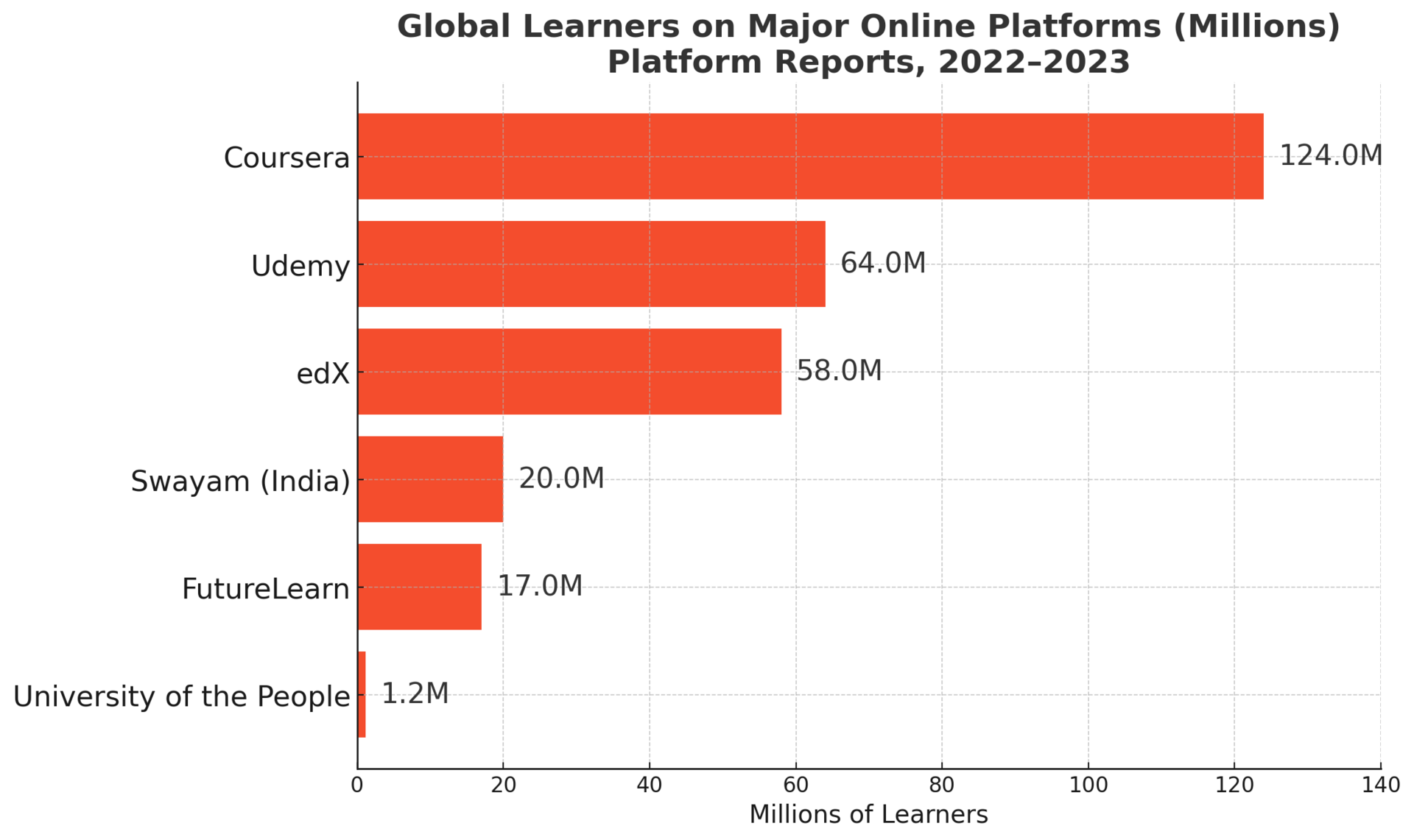
Behind the marketing of glossy brochures lies a deeper truth: student visas are often the front door to permanent immigration.
🛂 New Zealand explicitly encourages graduates to apply for permanent residency. In fact, the post-study work pathway is now a cornerstone of its population strategy.
🇳🇱 The Netherlands introduced policies to keep international STEM graduates in-country—tackling labor shortages and boosting innovation.
📉 On the flip side, Japan, despite elite institutions, struggles to retain foreign graduates due to language and regulatory barriers—a cautionary tale of talent mismanagement.
📍 Stat to consider: In Canada, over 60% of international students who complete a degree eventually become permanent residents—reshaping the country’s workforce.
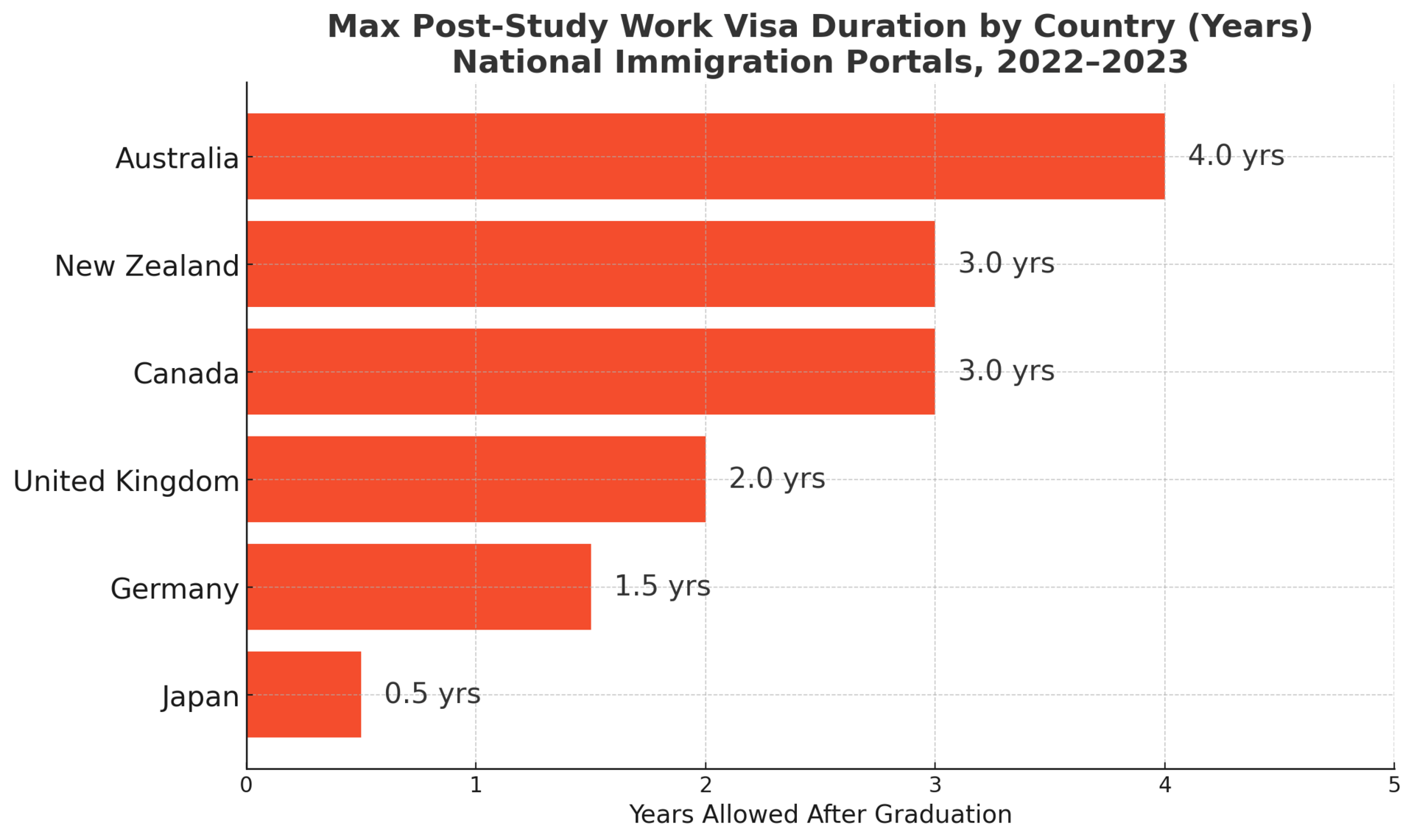
A university degree used to be a no-brainer. Today, it’s a global cost-benefit calculation.
💸 U.S. tuition often exceeds $30,000/year, leading some families to consider foreign alternatives. A degree in Germany or the Netherlands could offer the same prestige at a third of the cost—or less.
📈 Return on investment varies. A data science degree from India’s IIT may now deliver better job offers than a humanities degree from a mid-tier U.S. college.
👨👩👧👦 Many WPR readers are weighing these options for their children or grandchildren—looking beyond brand names to value, safety, and long-term opportunity.
💡 Interesting twist: A McKinsey report found that 43% of U.S. grads are in jobs that don’t require a degree—challenging the assumed ROI of traditional education.
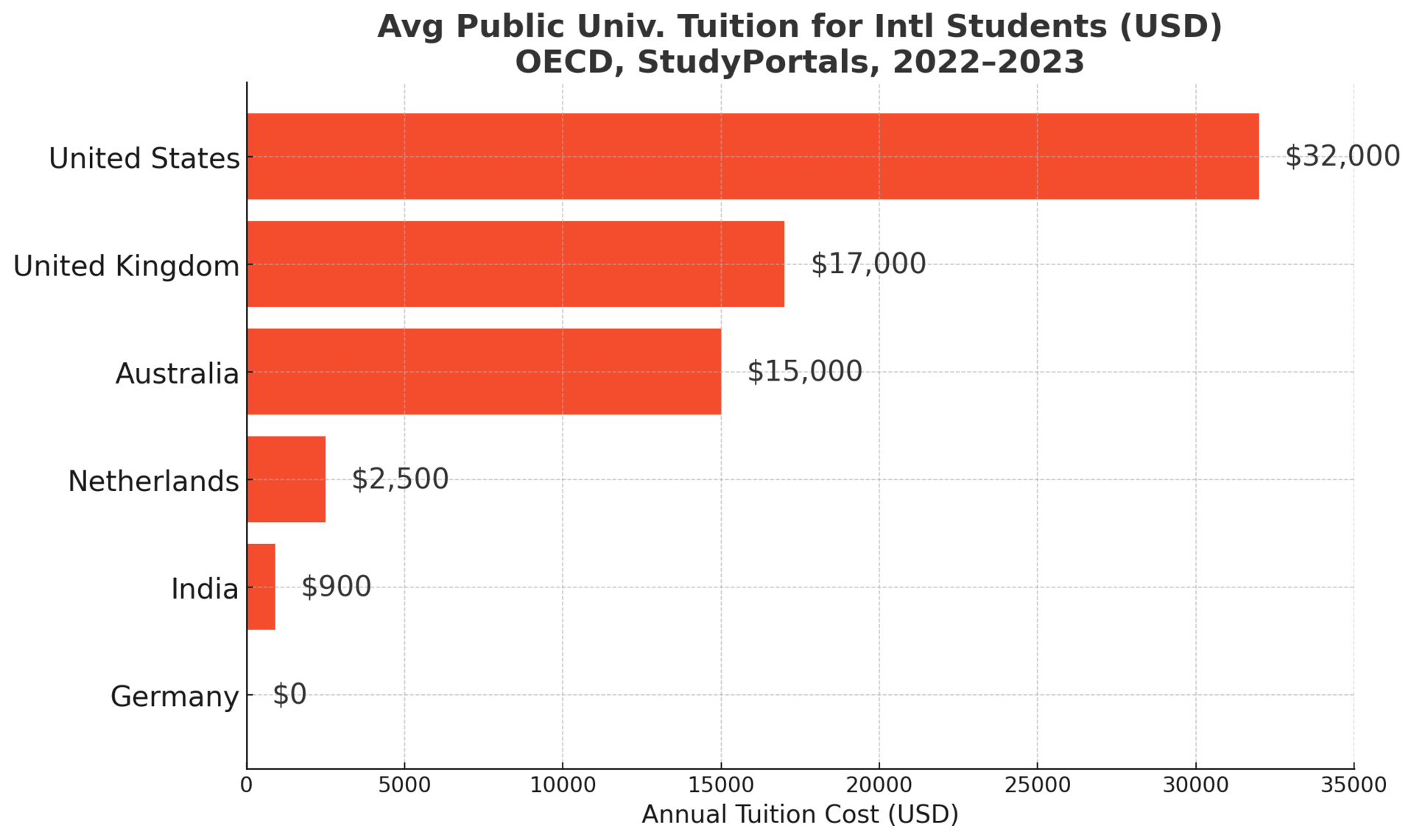
In the race for global influence, books may prove mightier than bombs.
🇨🇳 China has rapidly expanded its education influence, offering 50,000+ scholarships per year to foreign students—particularly from Africa and Southeast Asia.
🇰🇷 South Korea, known for its tech exports, now exports culture and education. The Korea Advanced Institute of Science and Technology (KAIST) is gaining global clout as an alternative to Western STEM institutions.
🇫🇷 France’s Campus France initiative supports French-language education abroad and funds francophone students—preserving cultural influence in former colonies and beyond.
🔍 Unexpected leverage: China’s Confucius Institutes, once cultural centers, now serve as educational diplomacy hubs—with over 500 branches worldwide (though some closures are underway due to political concerns).

Education is traded nowadays.
It moves people, shapes policy, and builds power. Whether you’re investing in your child’s future or exploring your next chapter, the education game is one worth watching.
Stay curious. Stay ahead.
Warm regards,
Shane Fulmer
Founder, WorldPopulationReview.com
P.S. Want to sponsor this newsletter? Reach 139,000+ global-minded readers — click here!


